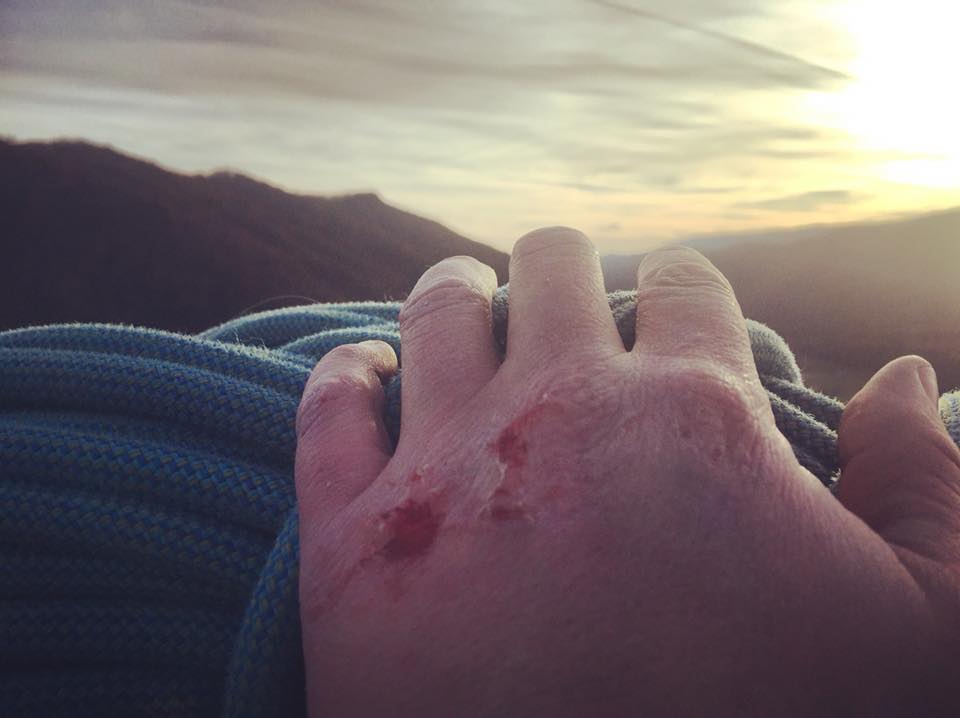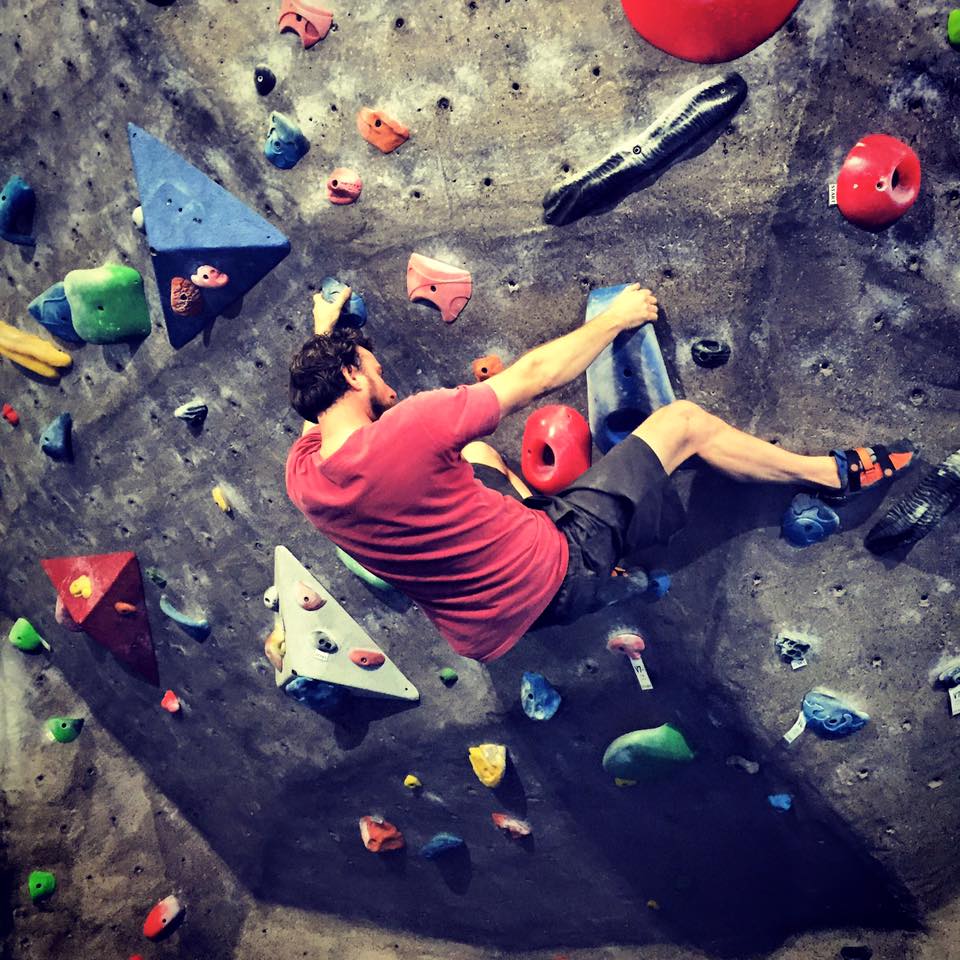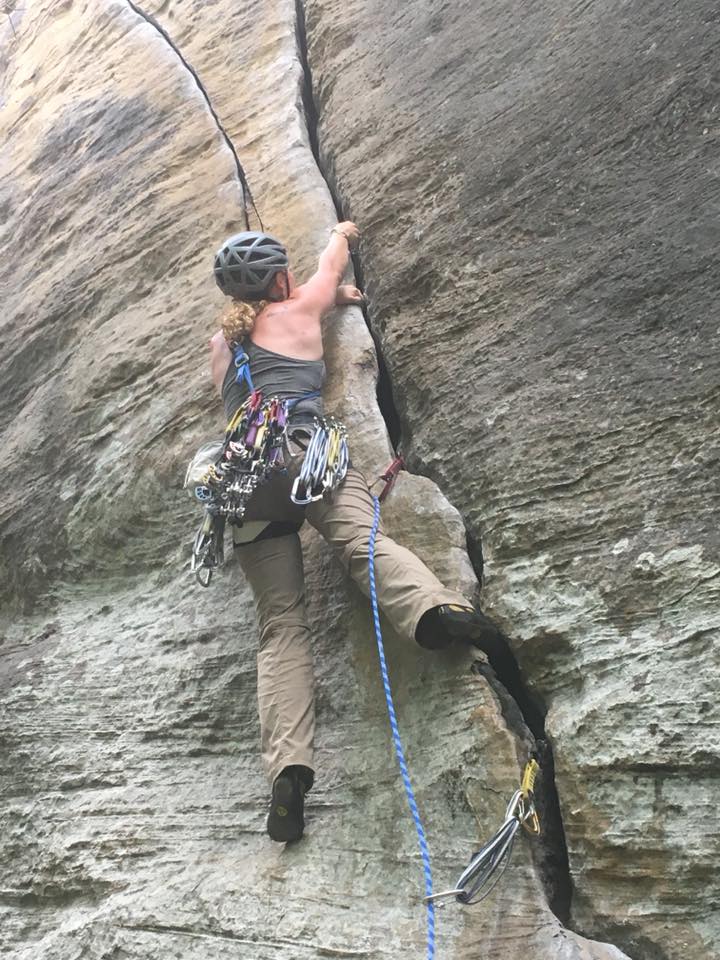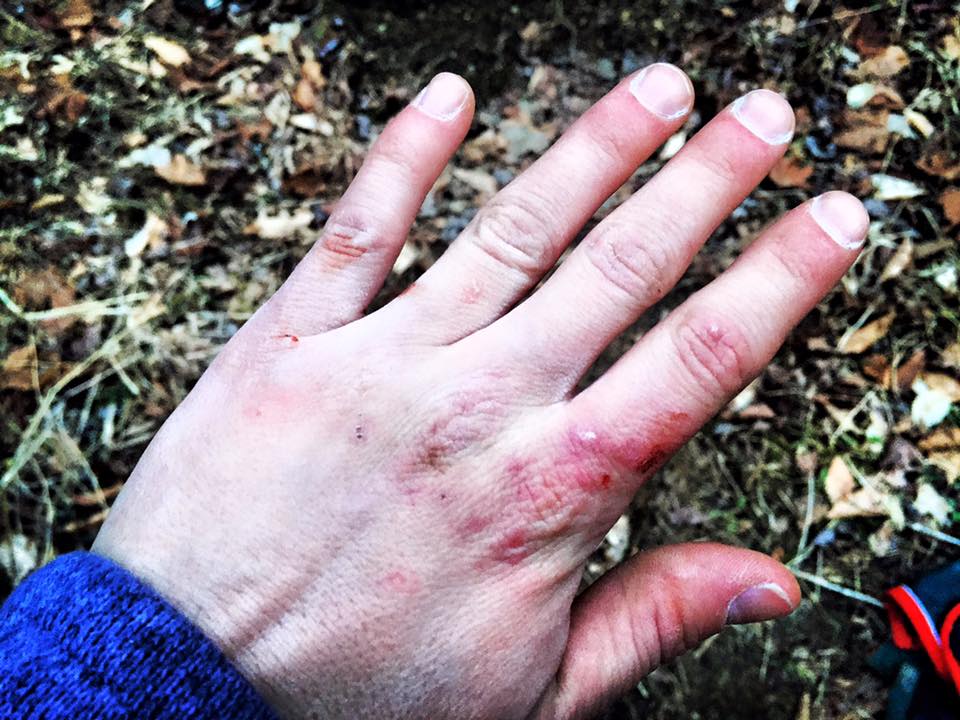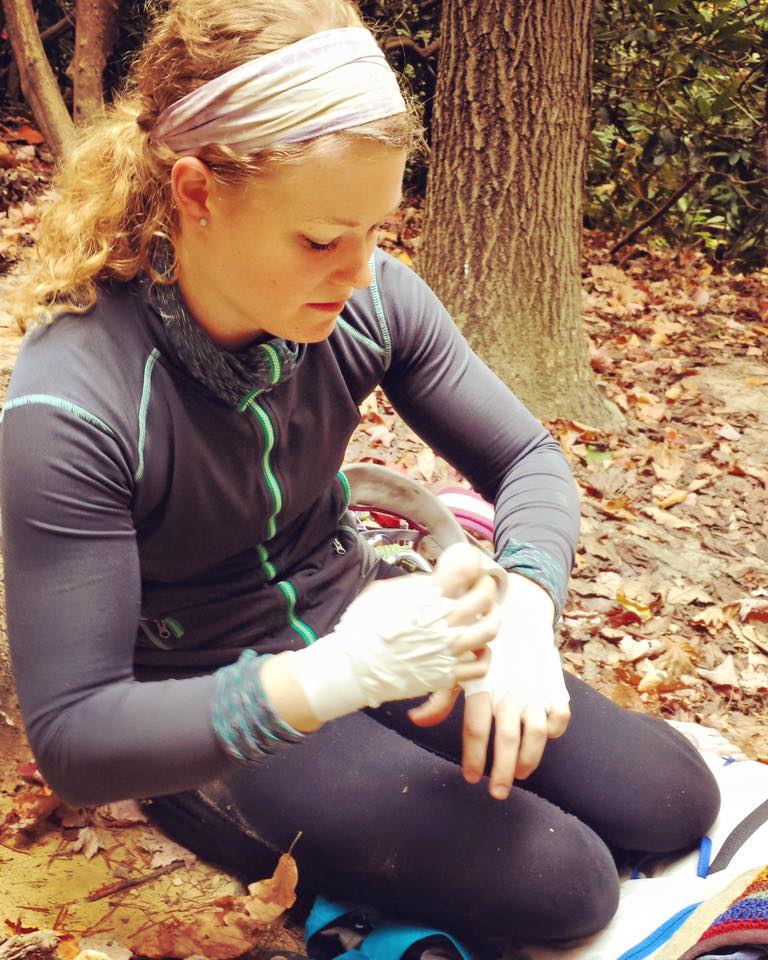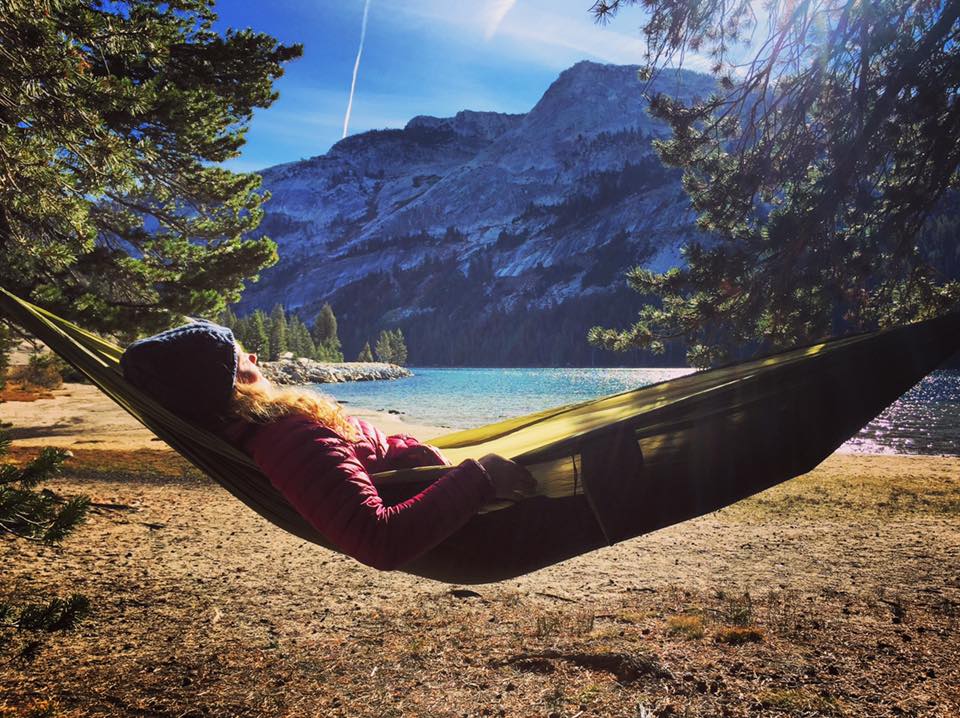You hit the climbing gym a few times a week and try to get out to the crag every weekend.
Your hang board routine consists of sets in the mornings, evenings, and before bed. You’re training harder than ever before and the results are showing.
A month ago you were struggling to top rope 5.11s, but now you’re working through movements on 12s with ease and have started leading in the upper 5.10 range.
The problem? The harder you train, the more prone you are to injury. Maybe you suddenly pop a finger pulley or a nagging pain in your shoulder begins disrupting your once explosive moves.
Whether it’s a traumatic incident or a slowly developing condition, you need to take a climbing injury seriously.
The first step? Exactly what you don’t want to hear: Stop climbing.
While scrapes and bruises are synonymous with climbing, just like any other sport, intense physical activity increases your susceptibility to injury. Ignoring an injury and pushing through the pain will only worsen your condition. Luckily, you can mitigate climbing injuries with proper training practices and good habits.
1. Finger Pulley Tears
Finger pulley tears are one of the most common climbing injuries and they’re pretty unique to the sport. A finger pulley tear results from overloading a finger tendon with your body weight, likely resulting from a dynamic move or crimping.
These injuries often occur when utilising one or two fingers in a pocket or gripping a small hold with the tips of your fingers. Often, you will hear and feel an actual pop. Pain immediately follows and swelling will develop shortly afterwards.
Finger pulleys, or annular pulleys keep the tendon that flexes the finger from “bow-stringing” away from the finger bone. They’re ofern refered to by the number, A1, A2, etc. With an A2 being one of the most common injuries of this type.
Finger pulley tears are frustrating because they take a while to heal. Applying ice and taking an anti-inflammatory is the first step to healing a finger pulley injury.
You’re going to need to take time off climbing until your fingers have healed. When easing back into climbing, stick to big jugs and other holds that avoid putting direct pressure on the injured finger(s). Taping these fingers while climbing during the healing process is an effective way to prevent worsening the injury.
Prevention: The best way to prevent finger pulley tears is to build up your finger strength slowly. Although your forearms might be strong enough to crimp on tiny 5.12 holds, your fingers might not yet have the strength. It takes more time to build strength in your tendons.
Hang boarding is a great way to build finger strength, but start slow, and take it easy. If you’re a beginner, give the hang board a miss and focus on climbing more at a moderate grade. Finger pulley tears can result in major training setbacks. Utilise every ounce of prevention.
2. Shoulder Subluxation
Climbers who boulder or make large, overhead moves are especially susceptible to shoulder subluxation, which is a partial dislocation of the shoulder.
It happens as result of extending the shoulder’s ball joint too far forward. You will feel a sharp pain in the back of your shoulder and need to stop climbing immediately, as continued movement could result in a full dislocation.
Recovery will require physical therapy and medical care. Stretching and conditioning routines will help you regain full strength and range of movement.
Prevention: Stretching to warm up the shoulders is a great way to prevent subluxations. Yoga is an especially effective way to build shoulder strength.
Be sure to ease into difficult movements. Start on easy grades and work your way up, backing off if you ever start to feel any kind of discomfort. Warming up and cooling down on the wall is a good way to help prevent shoulder injuries.
3. Rotator Cuff Tears
A rotator cuff tear is another serious shoulder injury. As opposed to dislocation, it’s also possible to tear the muscles in your shoulder.
Climbing is a unique sport in that we spend much of the time with our arms extended above our shoulders, which puts stress on the tendons. Pain and aching in your upper arms and shoulders when you lift your arms above your head signifies a minor tear. You may also experience some weakness and numbness.
Ice and rest are the best treatments for minor tears. More serious tears could require medical attention, so after any injury it’s important to consult a doctor. Physical therapy may also be helpful during the healing process to ensure that your shoulders regain their full range of motion.
Prevention: As with most shoulder injuries, stretching is a great way to prevent rotator cuff tears. Increase the strength in your shoulders by implementing cable machine exercises that involve internal and external rotations. Lateral shoulder flys with weights is another great exercise to help build shoulder strength.
4. Tendonitis
The general definition of tendonitis is inflammation or irritation of a tendon.
The most common symptom is a dull aching pain, often accompanied by swelling. Tendons are the cords that attach muscle to bone. In climbers, tendonitis most often occurs in the shoulders, elbows and forearms. Other names for tendonitis:
- Tennis elbow
- Jumper’s knee
- Pitcher’s shoulder
Although these names refer to other sports associated with the condition, you can link climbing to tendonitis in any part of the body.
Tendonitis is more of a chronic condition than the result of immediate trauma and can worsen over time. It is caused by constantly pulling on the same muscles and stems from repetitive movements.
It’s important to take tendonitis seriously so that it doesn’t develop into a tendon rupture - a much more serious injury that could require surgery. Treating tendonitis means taking a break from climbing, resting, and applying ice.
Prevention: Again stretching and conditioning are key here. Extensor and flexor exercises on a cable machine are especially helpful. Start with a little weight and add more over time to build strength before you hit the wall.
Do exercises that help build grip and forearm strength, as well. A hang board can be a helpful tool in this case as well, but again you need to be careful to start slowly.
5. Trigger Finger Syndrome
Trigger finger syndrome is a condition in which your fingers lock up when you bend them. You might notice a popping sound or clicking sound and some stiffness.
In this situation, a cyst has actually formed inside the flexor tendons in your finger, leaving you with limited gripping potential, which can be frustrating while climbing, although not typically painful.
Symptoms tend to start out mild but progress over time. The only real treatment is rest, anti-inflammatories, and in some cases, acupuncture can be effective.
Prevention: The best way to prevent trigger finger syndrome is to mix up your climbing style and training routine.
If you boulder one day, lead climb the next day, do top rope laps on moderate routes the third day, and be sure to take rest days. Gentle finger exercises and massage can also reduce the probability of occurrence.
6. Cracked Feet
While those super tight climbing shoes help you climb hard, they can wreak havoc on your feet. Dryness and trauma associated with crack climbing or heel hooking can result in cracked feet --- most commonly at the point of the heel.
This makes putting on your climbing shoes the next day extremely painful. While not life threatening, it can sure cramp your style, so it’s important to take preventative measures.
We’ve got some tips on keeping your feet in good condition, in one of of our other articles.
Prevention: Keep your feet soft and supple with a daily lotion application, before and after you climb. In the event of a cracked sole or heel, apply a healing salve and switch up your climbing style.
It’s also important to avoid overexposure to chemicals, wet conditions, and extreme cold, all of which can attribute to cracked feet. Stay off those cracks and overhangs until your feet heal --- go seek out some killer slab routes instead or set your sights on a long, moderate multi-pitch route in the meantime.
7. Abrasions
While bruises and abrasions are simply a part of climbing, when cracks leave your hands absolutely wrecked and covered in wounds which climbers affectionately call ‘gobies’, it might be time to think about taking measures to mitigate the occurrence or severity of these injuries.
Abrasions result from scraping your skin against rock. Sharp rock is an especially renowned abrasion culprit. Although not life threatening, these injuries take time to heal, and preventative measures go a long way.
Prevention: When it comes to your hands, tape gloves are your best bet at prevention. Many climbing apparel companies also sell climbing specific gloves for crack climbers.
General Tips to Help Prevent Climbing Injuries
Warm up…properly: Getting to the crag or the wall and jumping on your latest project straight away is very quickly going to put you on the bench. It’s really important to warm up properly and across all the major muscle groups.
Stretch, stretch, stretch: This can’t be emphasised enough. Stretching warms up your muscles further, but also aids flexibility. You should stretch before and after you climb. Studies have shown that static stretching should be saved for the end of your workout, where as dynamic moves are a great way to round up your warm up.
Yoga is a great addition to any climbing training regime as it helps you stretch and strengthens many important muscles and builds overall flexibility.
Improve your technique: Poor technique is often the culprit of many climbing injuries. Effective training methods focused on building strength evenly on both sides of the body are important for injury prevention. Consult a trainer or a climbing-specific physical therapist for advice on how to improve your climbing form and mitigate your chances of sustaining an injury.
Listen to your body: This one might seem unnecessary, but as climbers so many of us are so dedicated to our goals we often ignore what our bodies are saying. If we listen to our body and stop climbing when something starts to hurt, we’ll have a much better chance at recovering before serious injury occurs.
Take rest days: Although you probably want to climb every day, rest days are just as important as training days. Rest days allow your muscles to recover and grow stronger. Do something you enjoy to keep your mind off climbing.
